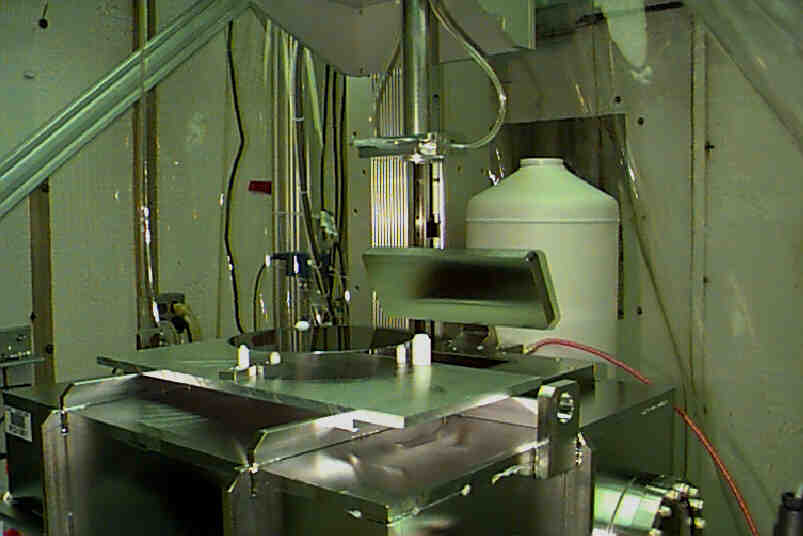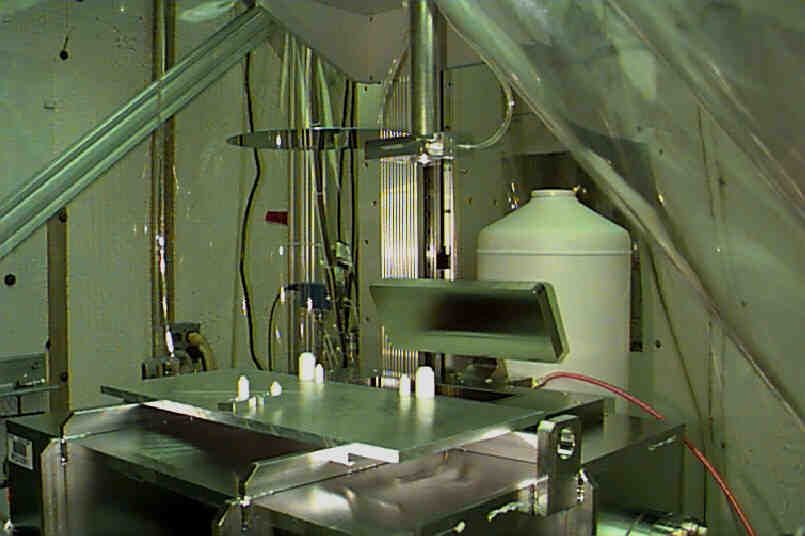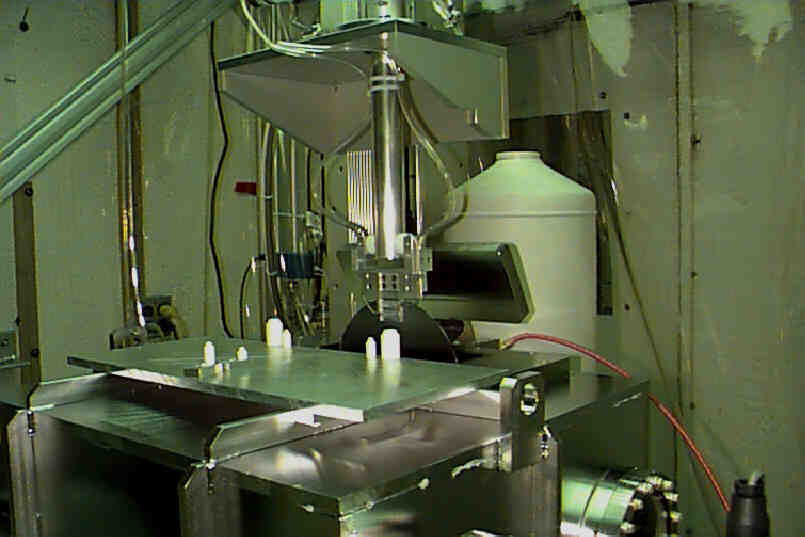|
 
| | Shown below is the wafer loading sequence into the TXRF chamber.
This chamber has been placed in a cleanroom to prevent contamination while
measuring the wafer. Seen in the pictures below are the chamber (center
bottom), the SiLi detector (left), and the wafer loading robot (top,
middle).
 |
Initially, the wafer is placed on top of the chamber on Teflon plugs by
a human, with the wafer backside up.
|
 |
The motorized robot then descends towards the wafer, and establishes
contact with the wafer.
|
 |
By using a vacuum wand, the robot maintains its "grip" on the
wafer as it slowly raises it.
|
 |
After reaching a predetermined height, the robot then rotates the wafer
90 degrees for entry into the TXRF chamber.
|
 |
Upon completion of the rotation, the robot then lowers the wafer slowly
into the chamber.
|
 |
Inside the chamber, an electrostatic chuck exists,
however, this chuck can only be used in near vacuum conditions.
|
 |
After leaving the wafer inside the chamber, the robot
arm moves up and out of the way.
|
 |
Finally, the chamber door is closed and the can now be
pumped down. After pumping, the electrostatic chuck is turned on
and provide the force to hold the wafer upright.
|
 |
Lower part of TXRF vacuum chamber. Seen on side of chamber are
electrical inputs to hold the wafer on the chuck and move the wafer to
various positions in the X-Ray beam, connections to vacuum pumps, and
a viewing port to allow visual check of the wafer position.
|
|

